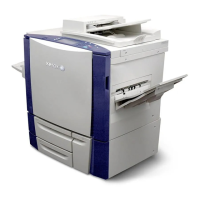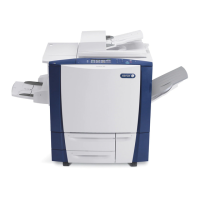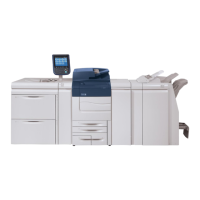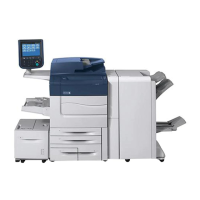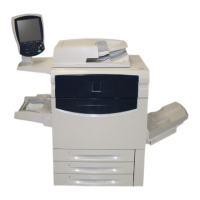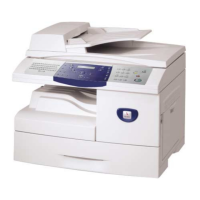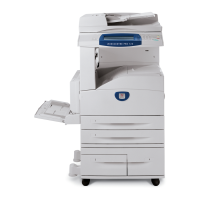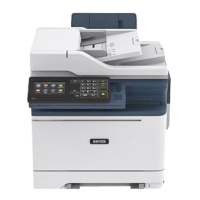February 2013
3-20
ColorQube® 9303 Family
IQ 2
Image Quality
IQ 2 Copy or Print Damage RAP
Use this RAP when the output copies or prints have nicks, tears, creases, folds, or curled
edges.
Ensure IQ 1 Image Quality Entry RAP is performed before starting this RAP.
Procedure
WARNING
Ensure that the electricity to the machine is switched off while performing tasks that do
not need electricity. Refer to GP 14. Disconnect the power cord. Electricity can cause
death or injury. Moving parts can cause injury.
WARNING
Do not clean the stripper blade. The stripper blade is very sharp and can cause injury. If
the stripper blade is dirty a new blade must be installed.
WARNING
Take care during this procedure. Sharp edges may be present that can cause injury.
WARNING
Take care not to topple the LCSS. The LCSS is unstable when un-docked from the
machine. Do not show the customer how to un-dock the LCSS.
Check the paper trays for damaged paper. The paper in the tray is undamaged.
YN
Load new paper in the trays.
Separate the finisher from the printer. Install a finisher bypass harness, PL 26.10 Item 3. Make
test prints.
The prints are good.
YN
Check the lead edge of the paper for damage. The damage is limited to the lead edge
only.
YN
Print chase pages, TP 12 to identify where the prints are damaged. Check the paper
path, GP 29 Component Locations for the following:
• Obstructions.
• Damaged guides and rolls. Pay particular attention to the areas that align with
the damaged on the prints. If necessary, print the Media Path Test Pages, TP
15.
• The edges of the paper path for protruding objects.
• Ensure that the paper feed does not skew the paper, go to OF 8 Multi-feed
RAP.
• Check the prints for damaged or folded corners (dog ears).
If the damage or fold is upwards, then check the transfix stripper assembly, PL
10.20 Item 14 and the exit path, PL 10.15.
If the damage or fold is downward, then check the drum stripper blade assem-
bly, PL 10.10 Item 18 and PL 10.10 Item 3.
Open the stripper gate, GP 31. Carefully clear any paper debris from the area. Check the
stripper blade for damage, PL 10.12 Item 3.
The stripper blade is damaged.
YN
Press the machine status button on the keypad. Select the Faults tab on the UI, then
Current Messages. If the message ‘Cleaning unit life extended, image quality may
be impacted’ is displayed, install a new cleaning unit, PL 94.10 Item 21. Or open the
front door and remove the inner cover. Enter dC959 and run the slow speed exer
-
ciser. While this is running, ensure the cleaning unit blade and roller is making con-
tact with the drum. The cleaning unit blade and roller are making contact with
the drum.
YN
Check the cleaning unit components:
• Cam front, PL 94.10 Item 9.
• Cam rear, PL 94.10 Item 13.
• Drive gear, PL 94.10 Item 23.
• Cleaning unit motor, PL 94.10 Item 24.
Print TP 14 Drum Striper Blade Test Print. The test page is good.
YN
Refer to Figure 1. The stripper blade releases from the drum before the
MLE line is reached.
YN
Refer to Figure 2. The pattern shown is caused by the stripper blade
bouncing on the drum.
The stripper blade releases from the drum at
the intersection of the MLE line.
YN
Redefine the image quality defect. Refer to IQ 1 Image Quality Entry
RAP.
Install a new back latch fork, PL 10.10 Item 12.
Install a new stripper solenoid assembly, PL 10.10 Item 3.
Check that the stripper blade latches correctly at the front and at the rear. The
stripper blade latches correctly.
YN
Check the latch components. Install new components as necessary:
• Stripper guide latch cam shaft, PL 10.10 Item 18.
• Stripper solenoid assembly, PL 10.10 Item 3.
Check the transfix blade for damage, PL 10.20 Item 14. The transfix blade is dam-
aged.
YN
Install a new stripper solenoid assembly, PL 10.10 Item 3.
Install a new transfix stripper assembly, PL 10.20 Item 14.
Install a new stripper blade PL 10.12 Item 3.
Remove the finisher bypass connector and dock the finisher to the machine. An LCSS is
installed
A
A

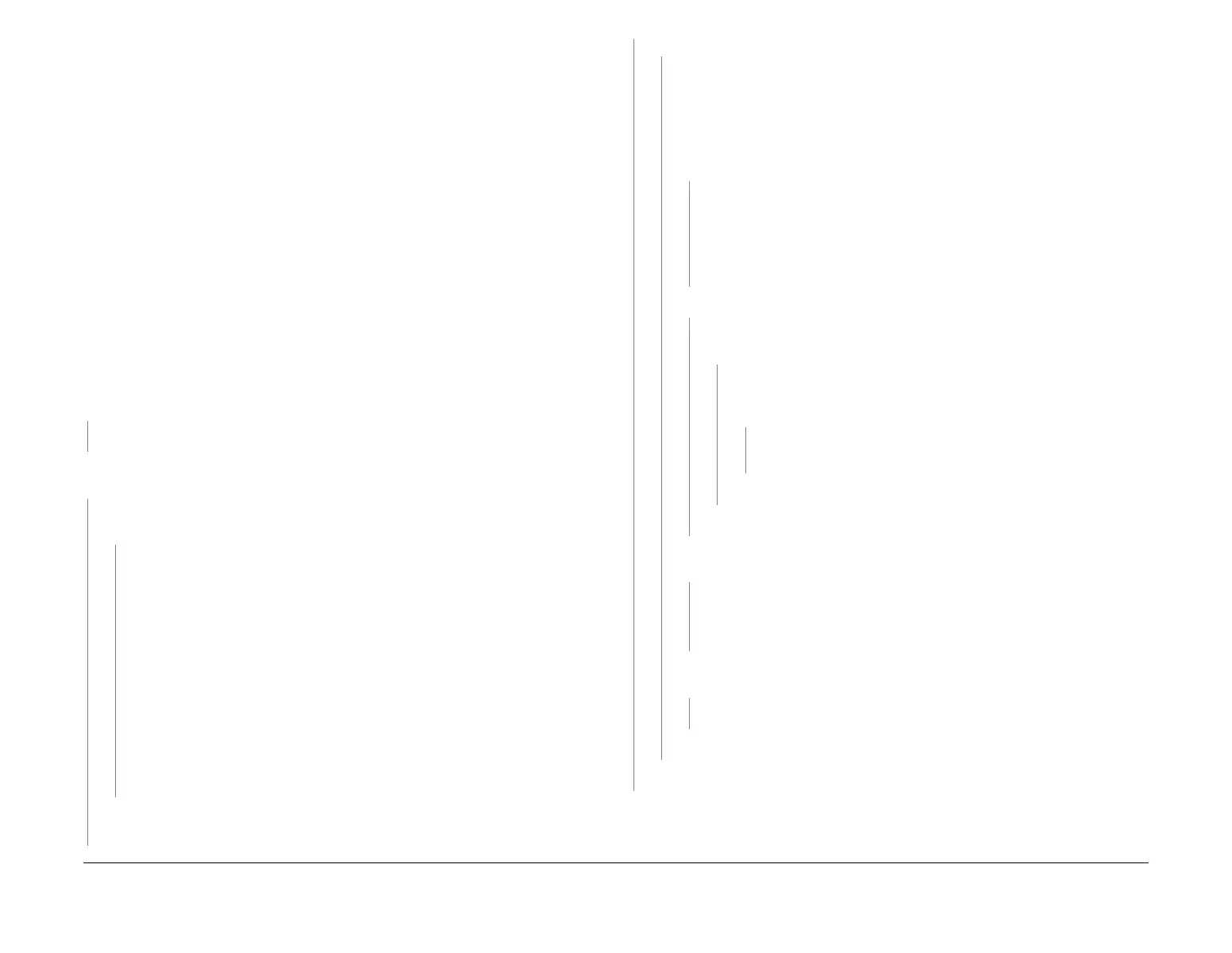